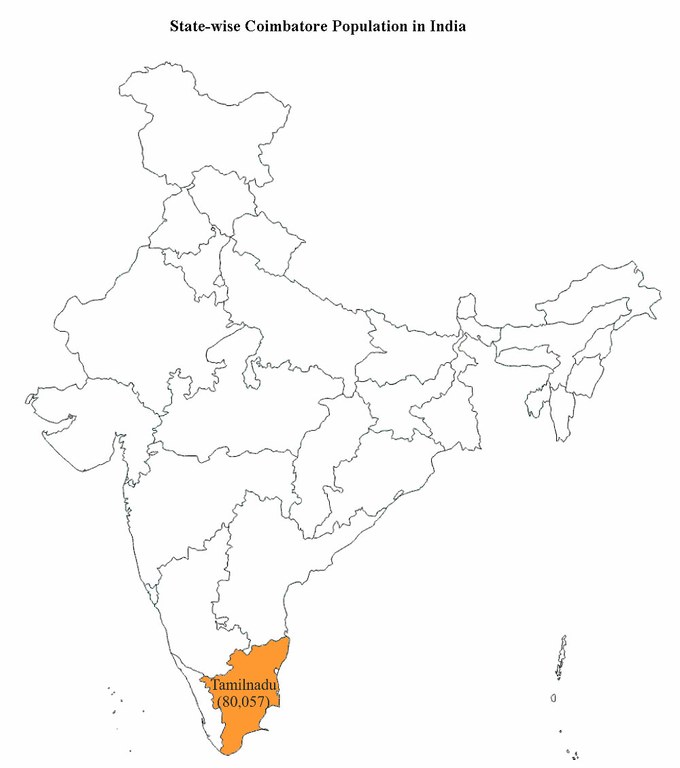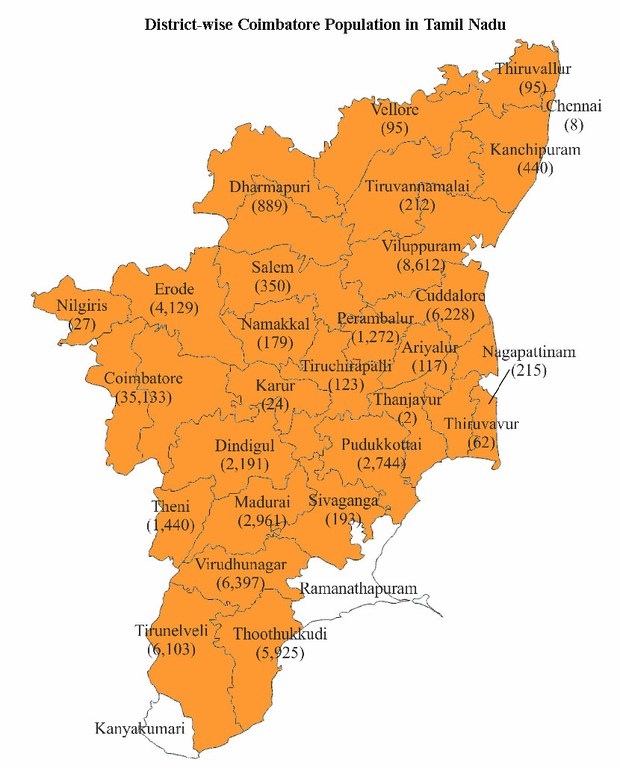Coimbatore
May 07, 2013
 The Coimbatore breed, also called Kurumbai, is found in the Coimbatore and Madurai districts of Tamil Nadu and in the districts bordering Kerala and Karnataka.
The Coimbatore breed, also called Kurumbai, is found in the Coimbatore and Madurai districts of Tamil Nadu and in the districts bordering Kerala and Karnataka.
They are medium-sized animals, white with black or brown spots. Ears are medium-sized and directed outward and backward, and the tail is small and thin. Approximately half of the males are horned and females are polled. The fleece is white, coarse, hairy and open. Under farm conditions lambing percentage on the basis of ewes available is about 50; litter size is single. Breeding is pure. Dressing percentage1 on pre-slaughter live-weight basis is 39. The average annual fleece weight is 730 g with an average fibre diameter and density of 41 μ and 385 cm2 respectively, and a medullation percentage of 58.
According to the 18th Livestock Census there are 80,057 Coimbatore sheep in India. (Refer to maps below).
| Adult Male | Adult Female | |
|---|---|---|
| Average Body weight (kg) | 24 to 26 | 21 |
| Average Body length (cm) | 63 | 59 |
| Average Height at withers (cm) | 62 | 59 |
| Average Chest girth (cm) | 71 to 72 | 67 |


Text Source: http://www.fao.org/docrep/004/x6532e/X6532E04.htm#ch3.2.9
Photo Source: CSWRI, Avikanagar
References:
1. Dressing percentage is one of the many factors affecting the value of a slaughter animal. Dressing percentage is calculated by dividing the carcass weight by the live weight of an animal and expressing the result as a percentage. For example, suppose an animal delivered to a slaughter house weighs 50 Kg. After slaughtering, the hide, head, feet and gut are removed. The carcass then weighs 27 kg. The dressing percentage of this animal would then be 27 divided by 50 multiplied by 100 i.e. 54 percent. This 54 percent represents the meat and skeletal portion of an animal compared to its live weight. The animal is weighed after transportation to the slaughter house so live weight is ‘shrunk’ weight. Further, the carcass is weighed warm as opposed to cold. The dressing percentage for a cold carcass can be 2% lower than the warm carcass dressing percentage for the same carcass.









